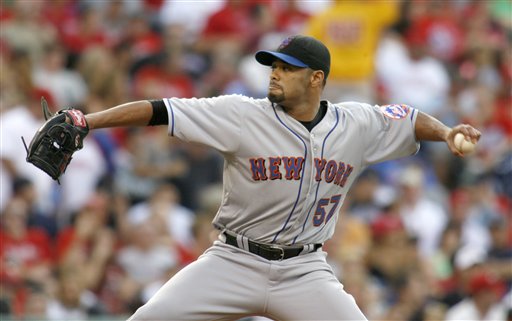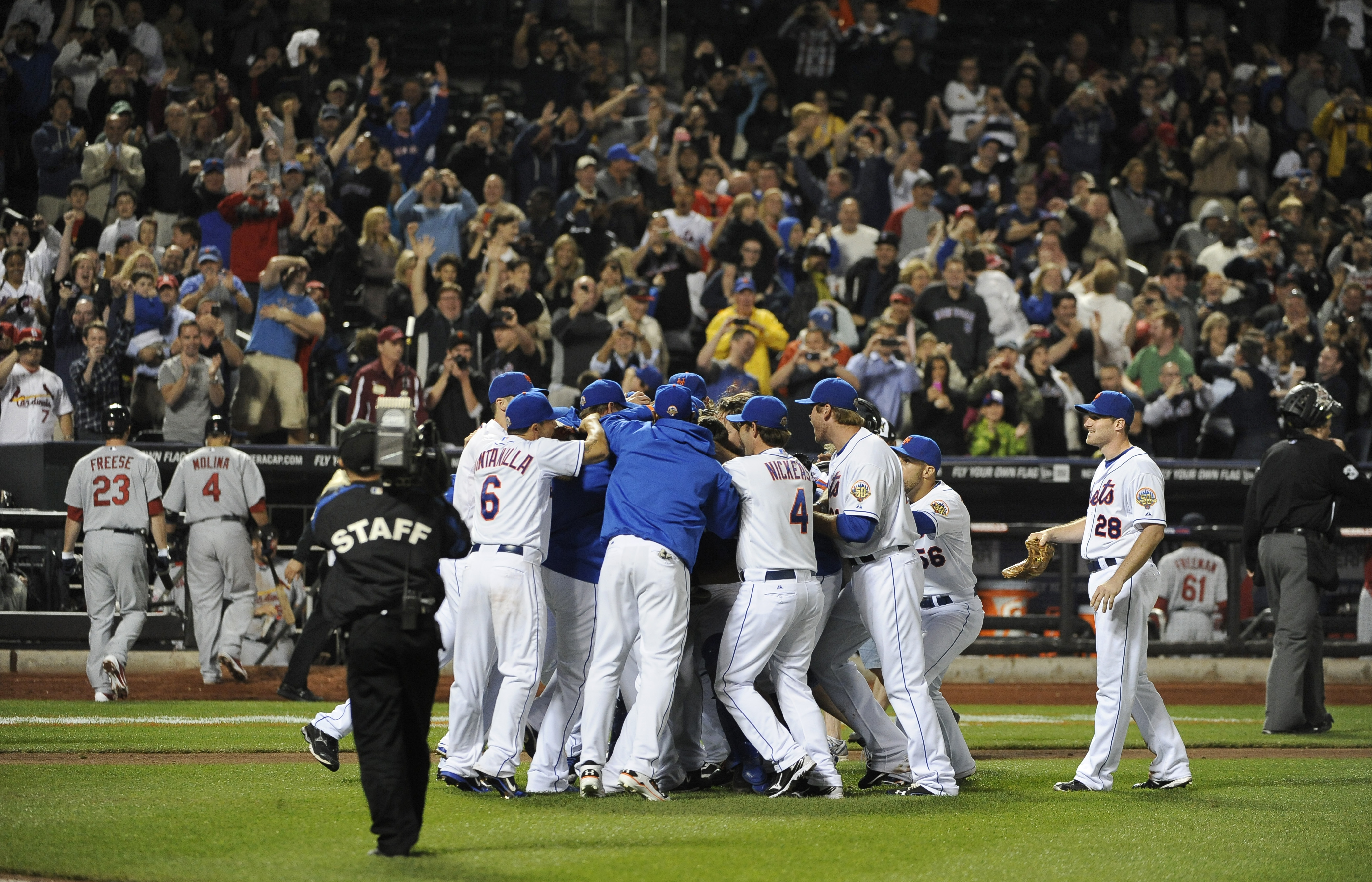Intriguing on-field plots are rare these days for the Mets. Indeed, watching their games in Houston and Pittsburgh last week had us all clamoring for the opening kickoff of the NFL season. But, if you’re a masochist of the highest order (and you are if you’re a Mets fan) and remain steadfast in watching the Amazin’s for the season’s balance, keep an eye on Johan Santana over his final seven or eight starts.
What is Santana anymore? That question has lingered all season, although it’s been obscured at times by the team’s usual ineptitude and onslaught of on- and off-field mishaps — among them a civil suit against Santana for an alleged sexual assault.
Regardless, the answer to that quandary remains convoluted. Santana’s still a good pitcher. He has a 2.94 ERA through 27 starts, his strikeout rates are passable if unspectacular, and he pitches in an extremely pitcher-friendly home ballpark, which isn’t necessarily a resounding vote of confidence but certainly doesn’t hurt him moving forward. I bought low in one of my fantasy leagues after his wretched, nationally televised start against the Phillies back on May 2, and he’s been a relative steal. This is all true, but it doesn’t tell the whole story.
For one, Santana underwent arthroscopic left elbow surgery last season, the effects of which are nearly impossible to quantify. What we can say definitively is that he’s enjoyed a second-half surge, which is actually in keeping with his career splits. Whether there’s a correlation between the time under his belt since surgery and his uptick in performance, even Santana might not be able to tell you. But the bulk of his best starts have come since July 1. In his first 16 starts, through June 26, Santana struck out six or more batters only three times. In 11 starts since then, however, he has struck out that many or more six times, a span that includes his only two double-digit strikeout starts. So, our eyes aren’t deceiving us; Santana is getting better as the season goes along, which is undoubtedly encouraging for a 31-year-old pitcher in whom the team has invested three more guaranteed years and $72 million.
Red flags, however, remain, as the peripherals are mostly trending downward. Santana’s 6.59 strikeouts per nine innings are the lowest of his career since 2001, when he was still an unknown reliever out of the Twins’ bullpen. Barring an unlikely run over his final handful of starts, this will mark the third consecutive season in which his K/9 has decreased and the first time it’s slipped under 7. His fly-ball percentage is up and ground-ball percentage down a tick from their career averages, but nothing too far outside the norm of standard deviation. Also, his 2.55 walks per nine innings are the highest of his career since becoming a full-time starter in 2004.
So, if strikeouts, ground balls and minimal walks are the earmarks of a top-shelf pitcher, and Santana is regressing in all three of those categories, how is he keeping his ERA under 3? Santana’s success may be on account of good fortune — both in the form of blind luck and his home ballpark. His home run per fly ball percentage is quite low at just 5.6 percent — the lowest of his career, in fact, and lower than his 9.0 percent career average. Now, this is not entirely a fluke, per se. Santana’s HR/FB has dropped in each of the past three years, which is no coincidence in light of his ditching the American League and the homer-happy Metrodome in favor of the National League and spacious Shea Stadium and Citi Field. But, his homer rate is extremely fortuitous for a fly-ball pitcher who doesn’t strike out a ton of guys anymore.
The problem with a potentially fluky HR/FB rate is that a fly ball — even a poorly struck one — can sometimes eke its way out of the yard, whether it be on account of weather conditions or a ballpark’s dimensions. A ground ball, for instance, cannot; it stays in the park, no matter what. Now, Santana’s low homer rate is not sheer luck; good pitchers induce poor swings, and poor swings produce weakly hit balls. And, he’s always been a fly-ball — and therefore homer-prone — pitcher. The difference between now and his prime, as I alluded to earlier, is that he was still striking out batters at an insane rate, which is no longer the case. Fewer strikeouts, of course, leads to more balls in play, and more balls in play increases the potential for damage.
All of this amounts to little with respect to the Mets’ options in handling Santana. The fact that he’s clearly a good (but no longer great) pitcher, combined with the steep balance of his contract, make him essentially unmovable unless they are willing to eat a substantial portion of his deal, which is unlikely if we’re to gather anything from their stubbornness in dealing with the omnipresent albatrosses that are Oliver Perez and Luis Castillo. Not to mention, Johan is actually still, you know, useful. The roundabout — and ultimately moot — question here is, should they be interested in moving him?
At the time of his acquisition, the Mets needed Santana in more ways than one, first to assuage an irate fan base after an horrific late-season collapse, but also because they were desperate for a legitimate ace, which was a sentiment validated time and again in the years subsequent to his acquisition. Indeed, the Amazin’s have not had a formidable No. 2 behind Santana throughout his three-year tenure in Queens. And considering the Mets surrendered literally nothing of value to the Twins, their only expense was their hefty financial obligation — insofar as six years and $137.5 million can be described as “only.” But now that’s he is a No. 2, where do the Mets go from here?
Unfortunately, it’s a wait-and-see approach for the Mets and their fans, because the best-case scenario is that Santana somehow manages to buck the trends of recent years and rediscovers strikeouts in abundance (his past handful of starts have been encouraging). Otherwise — and it’s the more likely scenario — Santana’s on-field value in relation to his compensation will continue to erode.
With the season’s balance essentially devoid of anything even remotely compelling for the Mets and their fans, this one bears watching.







